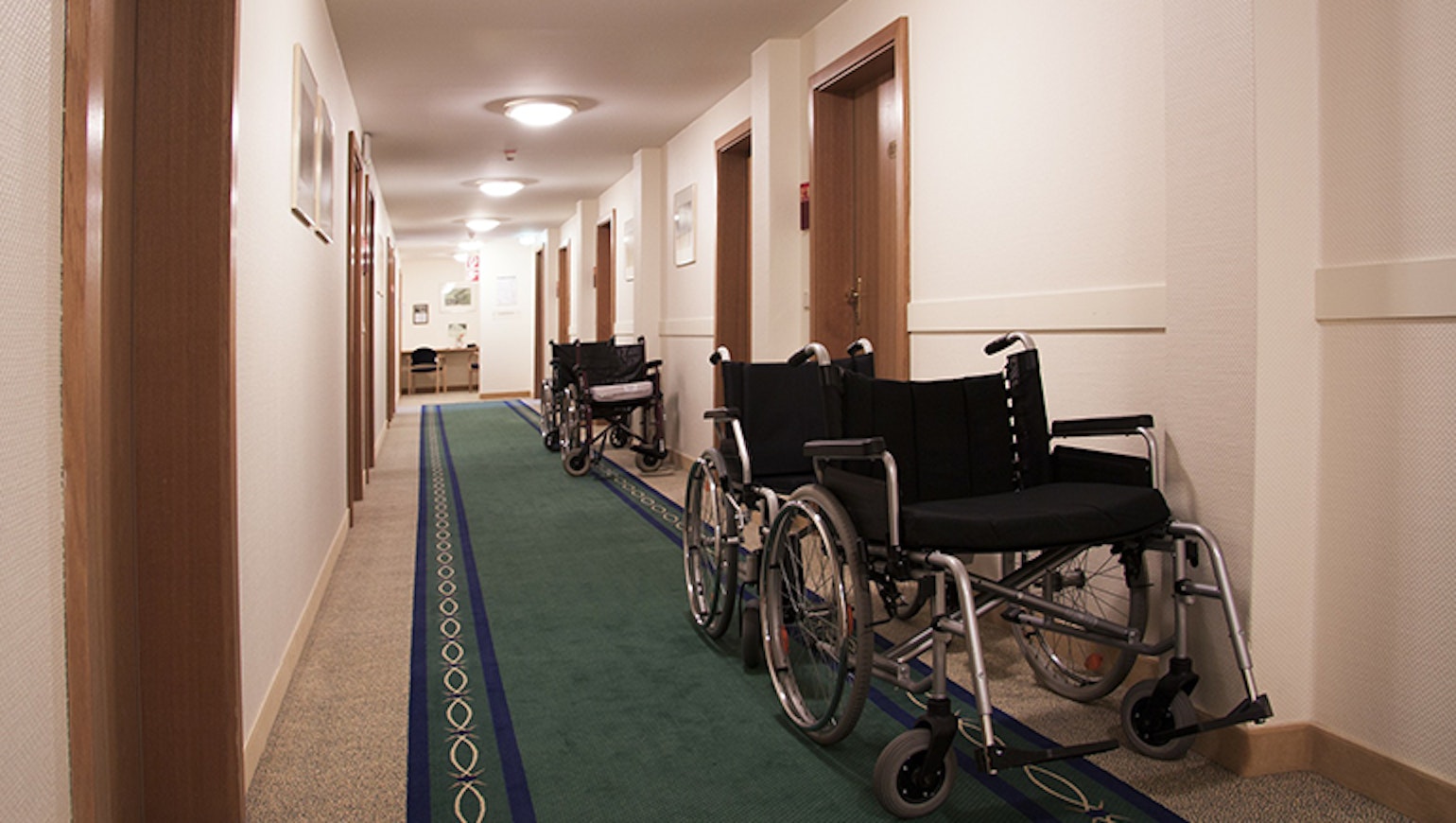Winter contingency plans for care homes
Winter can be a challenging time for care homes. As well as increasing the risk of logistical and maintenance issues, including burst water pipes, icy paths, and delayed supplies, the health risk to residents and staff is greater too.
By Alan Boswell Group

To manage risk in your care home, we look at what to consider when it comes to setting out effective winter contingency plans, and how care home insurance can help cover the cost if the unexpected does happen.
Why is winter planning crucial for care homes?
Colder weather increases the spread of viruses and can make existing health problems worse. For older or vulnerable people with weaker immune systems, even common colds can lead to more serious conditions.
In addition to health, there are risks to buildings as bad weather can lead to leaks, damaged pipes, and even power cuts. Extreme conditions such as floods, storms, or snow add another layer of risk as care homes face the possibility of road closures and shortages of supplies.
What are the key elements of a winter contingency plan
Having a winter contingency plan can help ensure your care home continues to run as smoothly as possible, putting the minds of residents, their relatives, and staff at rest.
If you’re creating a contingency plan for the first time, making a template that can be updated every year is one of the simplest ways to make sure you’ve covered all the key areas, which include:
Risk assessment and mitigation
Identifying the risks can help you focus on how to prevent them, what to do if it becomes unavoidable, and how to manage the impact. For example, if a resident or employee develops flu, you’ll need to consider the impact on communal events such as mealtimes or daily activity sessions, as well as managing the health risk for the individuals with the virus.
Infection control
Minimising the risk of infections in the first place goes a long way to preventing outbreaks. Check that eligible residents are offered appropriate vaccines (including flu, pneumococcal, and shingles). Care staff are also entitled to free flu jabs, so it’s worth highlighting this and reminding teams to vaccinate.
Good handwashing and hygiene practices are equally important, as colds, flu, and norovirus can spread easily and quickly indoors. Posters positioned prominently in kitchens and staff communal areas can serve as helpful reminders.
Also, check that your care home receives any updates from local GP practices or health bodies so that teams can stay alert for local outbreaks.
Staff and training
Ensure induction policies are updated with the latest training and guidelines, and staff understand their roles in an emergency and who to contact.
Set out guidance for what happens if there are transport issues and staff cannot get to the home, and consider how senior staff might access databases and care plans remotely.
Staff should be clear about care plans, any pre-existing health conditions that put residents at greater risk of infection, and what to do if a resident starts to deteriorate. The home should also have enough PPE to keep staff protected.
You should be able to maintain staffing ratios, for example, engaging agency staff and ensuring that you can find adequate cover even at short notice.
Heating and other utilities
Double-check that there is a clear maintenance plan and that at-risk areas are assessed before winter sets in, for example, boiler servicing and heating.
Keep heating systems and radiators efficient and implement measures to lower bills, such as draught-proofing. Check that generators are maintained regularly and that there’s sufficient fuel on-site to keep them working in emergencies.
Emergency supplies
Stock up on essentials, including medical supplies, food, bottled water, cleaning products, and blankets in case of emergencies.
You can manage longer periods of electrical outages by ensuring you have enough batteries and torches. Having wind-up radios can also help you stay updated with local news and provide some reassurance to residents and staff.
Also, consider having power banks on standby so that staff can keep their phones charged in case they need to contact family or friends. Having stock of de-icer is also handy so that staff can drive home safely.
Communication protocols
Have a clear communication plan and identify all essential contacts, including hospitals, pharmacies, and GP practices, especially in consideration of care plans for more vulnerable residents. It’s also critical to keep communication open with members of staff during emergencies.
Make sure that you have up-to-date emergency contacts for residents and that staff know where paper consent forms are kept. This helps ensure key decisions can be made even if computer systems are down.
Establish communication plans with local councils, too, making sure your home has a point of contact that will be able to help and keep you updated in an emergency.
Bad weather
Ensure that paths and car parks are gritted, well-lit, and snow shovels are ready to clear walkways. Stay up to date with weather forecasts to help predict icy conditions so maintenance teams can better prepare in advance.
If some staff can’t come to work, make sure they can be covered by agency teams or other employees.
How care home insurance can support your winter contingency plan
Even comprehensive contingency plans can’t predict or mitigate every risk, but care home insurance can help cover the cost of unexpected events. Policies are specialist and are tailored to cover the type of care home you run, and business activities and liabilities. So, for example, residential care homes will need slightly different cover compared to a home that also provides nursing care or a domiciliary care agency.
As with most insurance policies, you’ll need to be aware of any exclusions. For example, for care home insurance to be valid, you’ll need to ensure your home meets all CQC requirements and is registered.
Features can vary from policy to policy, but areas to consider include:
Property damage cover
This helps cover the cost of building repairs, for example, if the home is damaged in a storm or flood. Policies can cover the building itself, contents, and equipment.
Bear in mind that most providers will expect care homes to have a business continuity plan in place. This should set out clear guidance about how business activities will be carried out and where residents will be placed if the home is uninhabitable.
Insurers will also expect the property to be maintained for a policy to be valid (for example, carrying out electrical checks, clearing gutters, and keeping doors and windows in good repair).
Business interruption cover
These policies cover lost income if your care home must close after an unexpected event. The aim is to put your care home back in the same financial position as it was before it had to close. In other words, it’s there to help ensure you’re no worse off financially.
Public liability cover
Public liability compensates third parties if they blame your business for an accident or damage to their property. For example, if a relative of a resident tripped on an uneven path.
When comparing liability cover, remember that there are important distinctions between them. For example, public liability doesn’t cover professional liability, which compensates for mistakes made in a professional capacity (like giving someone the wrong medication). Similarly, neither of these is the same as employers’ liability insurance, which is a legal requirement if you have employees and covers you against claims of accident or injury brought about by employees.
Care home insurance for continuity and peace of mind
Winter can be tricky for average homeowners, but when you own or manage a care home, the risk to vulnerable residents can be far greater. Having a contingency plan can help you focus on and mitigate worst-case scenarios such as power cuts, flu, or norovirus outbreaks.
Care home insurance can complement contingency plans by giving you the financial support you need to get your care home back up and running, giving everyone, including residents, their families, and staff, peace of mind.
To get a clearer idea of what a care home insurance policy looks like for your business, speak to one of our experts on 01603 218000.
Need help with your insurance?
At Alan Boswell Group, we can help tailor your care home insurance policy so it reflects the activities you carry out, ensuring that all aspects of your business are covered. For more information or to discuss your requirements, you can speak to one of our experts on 01603 218000.
We also offer other types of care and medical insurance, so if you’re considering alternative care services, such as domiciliary care please get in touch.
Make an enquiry
FAQs
Your risk assessment should focus on key areas, including:
Risk assessment
Infection control
Staff and training
Heating and other utilities
Emergency supplies
Communication protocols
Bad weather management
Ensure your home has a generator and sufficient fuel to run it for a prolonged period. You should also stock up on batteries, torches, and wind-up or battery-operated radios.
Standard precautions include respiratory etiquette, hand-washing protocols, the proper use of personal protective equipment (PPE), along with environmental cleaning and disinfection. Additional measures can include outbreak control strategies such as, increased cleaning frequency, cohorting staff, and potentially limiting visitors.
You can also consider vaccinating residents if they wish and ensure that care staff are aware of their flu jab entitlement.
Staff should be aware of their responsibilities if a resident develops flu and how to mitigate the risk of it spreading. Staff should also be trained to manage the symptoms and to watch for signs of deterioration.
Care home insurance can help cover risks throughout the year, including winter-related risks such as burst pipes or damage caused by floods. Policies are tailored to your needs so you can include cover for business interruption, and liabilities such as public, professional, employers’, and medical malpractice.
Review emergency contingency plans with staff on a regular basis and ensure that everyone knows what their responsibilities are. They should also be clear on who to contact in an emergency.
Staff should also review care plans monthly to ensure that they’re clear on residents’ medical needs, consent, and vulnerabilities.
Related guides and insights

Comprehensive guide to care home insurance: protecting your business
If you own or manage a care home, ensure you have all your insurance liabilities covered with our comprehensive guide.

Guide to Care Quality Commission assessments
The Care Quality Commission inspects care homes to ensure they meet quality and safety standards. To help you prepare, we look at CQC requirements, what’s involved, and how the result affects your care home insurance premium.

Managing resident safety risks in care homes
Care home insurance can help mitigate the financial impact of accidents and mistakes, but avoiding unnecessary risks in the first place should be a priority. We look at how to manage resident safety and implement effective risk assessments.

The difference between domiciliary and residential care
Domiciliary and residential care share similarities, but if you’re thinking about setting up a domiciliary care business or weighing up care options for a loved one, what are the differences and advantages of each?

Guide to setting up a care home
Setting up a care home comes with strict rules. We look at your obligations and why care home insurance is an essential part of registration.
